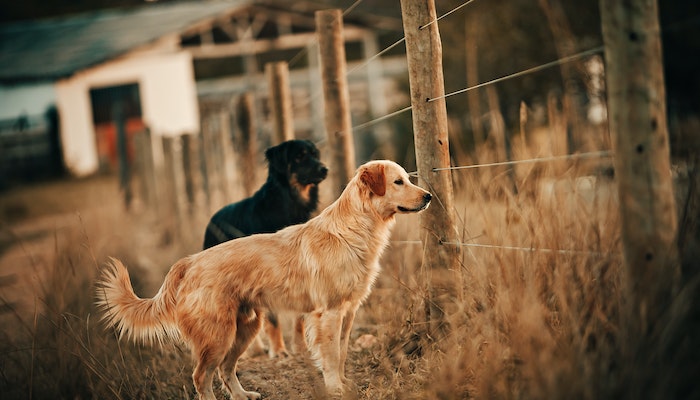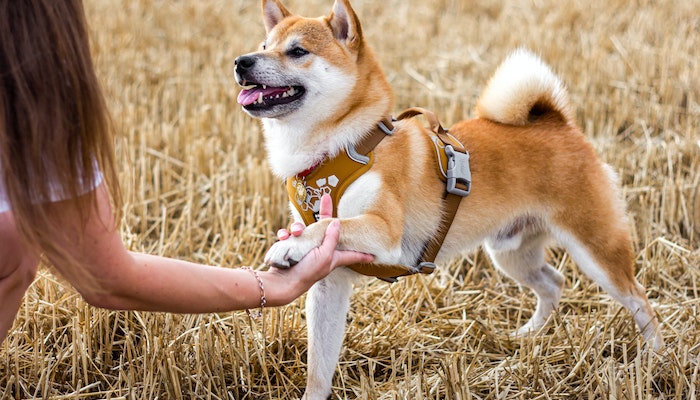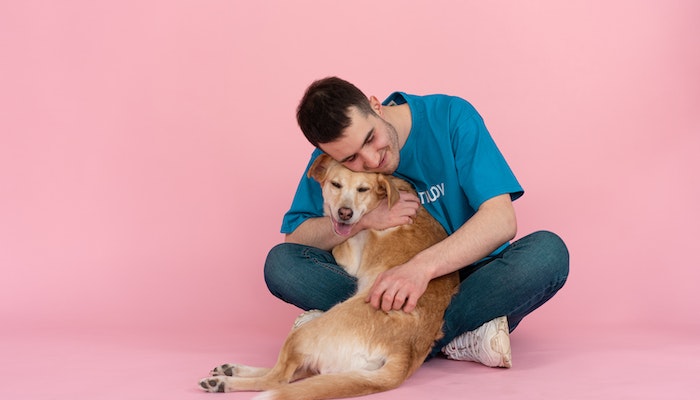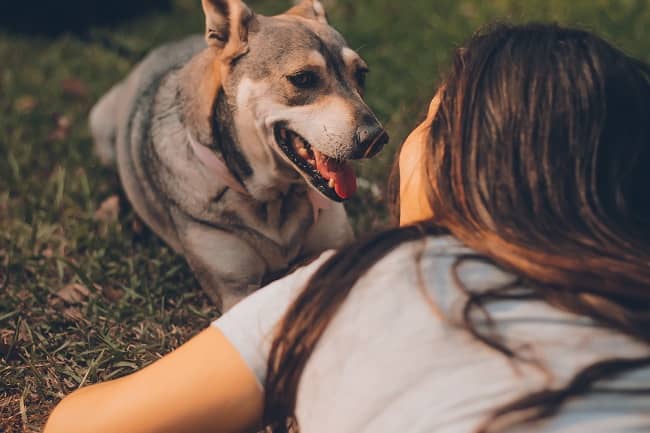Before you decide to take on any kind of pet you need to understand that different breeds of cat are susceptible to different health issues. Even if it seems like you have a healthy cat in the beginning it is possible that they will be diagnosed with some sort of disease or health related issue as they get older.
You need to make sure that you read the label on the food that you are getting for your cat. Although it may seem strange because your cat is a pet, their nutrition is still just as important as yours is which is why you should read the ingredients so that you are aware of what is in the food you are giving your cat. You also need to pay attention to what formula of cat food that you are purchasing. They have food for adult cats, kittens, aging cats, cats on diets, and everything in between. You don’t want to be feeding your kitten the wrong kind of food.
The Basics Of Cat Feeding

After picking up the right food for your cat, there is a matter of where to feed your cat, when to feed your cat, and how much to feed them. If you have never owned a cat before this can be quite a tricky process to figure out all on your own. First and foremost, you need to find a place that is ideal for your cat to eat at.
Think about it from your cat’s perspective, you really wouldn’t want to eat while adults and kids are running all around you and being loud. This is why you need to find a place that is quiet and accessible for your cat to have their food and water bowl. Once you decide on a particular place, don’t keep changing it around because cats don’t always deal well with that type of change.
Keep in mind that your cat might make a bit of a mess when they are drinking and eating so it may not be wise to put the food and water in an area that is going to be ruined by the mess. You also need to make sure that you are keeping the bowls clean and changing the water out on a regular basis in order to avoid your cat getting sick.
If you are not a cat owner yet, or you are becoming one for the first time and want to be prepared for the commitment, you might find very useful the following entry: Owning A Domestic Cat 101: Important Tips, And What Supplies To Get. In this previous chapter we explain What you need to check before getting a new cat, how to deal with your new kitten, and more.
How To Feed A Cat

As far as when you should feed your cat, it is good to get your cat into the habit of eating at a particular time each day. Just as humans eat breakfast, lunch, and dinner at certain times, so should your cat. Of course this might not be quite so easy if you are away from the house during the day, but there is a solution. If the cat is eating dry cat food you can simply put the entire day’s ration into the food bowl and your cat can eat from it throughout the day.
If you aren’t sure you want to put it all in, you can choose to be half of it in the bowl. It’s really up to you and your schedule as to what a regular and convenient feeding schedule will be, but it is wise to get a regular pattern started. Listed below will give you some ideas as to how to coordinate your feeding schedule:
- At 4-6 weeks: 1/2 to 1 oz – 3 to 4 times per day.
- At 7 weeks to 6 months: 1 to 3 oz – 3 to 4 times per day.
- At 7 months to 1 year: 3 oz – 2 times per day or you can leave 6 oz in their bowl all day.
You can also look on the package of cat food that you buy for what they suggest you feed your cat.
Just as there are certain things that you need to keep in mind when feeding your cat, there are also certain thing that you shouldn’t do when feeding your cat:
You shouldn’t give your cat bones; this is a good rule for any pet whether they are a cat or a dog. Chicken bones, pork bones, and fish bones are a big no because they can cause quite a bit of damage to your cats tummy and throat that could lead to a trip to the veterinarian or worse.
Again a good tip for any animal, don’t give your cat leftovers from the table. Although you think that you are doing them a favor by giving them a treat, you could be making a bigger problem when your cat begins to avoid their cat food.
Cats can’t eat two foods in particular, the first being chocolate and the second being onions. Both of these foods are considered a toxic food to your cat.
Despite what you may have seen on television or in the movies, cats do not need to drink milk. What more, if you give milk to your cat you might find yourself cleaning up after an icky mess since it can cause diarrhea.
The last tip is not to feed your cat any other animal’s food. They need the nutrients that are in their cat food and dog food won’t quite give them what they need.
As time goes on and you have your cat, you will find out what foods or pet foods your cat can tolerate.
How Do I Know If My Cat Is Fat?

Cats are very similar to people in many ways. Just as it is important to watch what is going into your cat’s tummy, you also need to keep an eye on how much is going into your cat’s tummy. When people eat too much food, over time they become overweight.
Cats are the same, if they become used to eating however much they want, when they want, it is a sure bet that you will have a pretty fat cat on your hands after a while. This is especially true as your cat gets older and less active. If you aren’t sure if your cat is fat or not, there are a few telling signs that you can look for that are pretty similar as to when you can tell if a person is overweight.
A double chin is always a telling sign of a weight problem. If you find that your cat has a bunch of fat underneath their chin, they might have a weight problem.
A big stomach is another sign, if their stomach is hanging, they might have a weight problem.
Another is whether or not you can feel your cat’s ribs. On a healthy cat you should be able to feel their rib cage, if you cannot feel your cat’s rib cage then your cat is definitely overweight.
Just as people think that their weight might not be a big deal, many cat owners might not feel it too distressing that their cat is a little overweight. The reality is that being overweight can cause many health problems in your cat. The more weight your cat has on their body, the more weight and pressure they have to carry around on a daily basis. This is why it is so important to pay attention to what and how much your cat is eating. If you do find that your cat is overweight you should probably speak to your veterinarian about it and look into buying a specially formulated cat food for overweight cats.
Are you still looking for the perfect feline companion for you and your family? Choosing a cat is a serious matter you need to pay attention to when you’ve taken the decision to be a proud cat owner. Different cat breeds have different needs and personality traits you must be aware of before bringing home a new kitten. Take a look at this: Owning A Domestic Cat 101: Selecting A New Cat Or Kitten. This article will help you realize what kind of cat is best for you.
Your Cat Needs To Have Some Physical Activity

Whether you have an overweight cat or not, it’s important to make sure that your cat gets the exercise they need. If your cat isn’t overweight then the exercise will help keep them active and avoid such a predicament, but if your cat is overweight then the exercise will help them to trim off a few pounds.
The great thing is that exercising with your cat doesn’t have to be a tedious activity; it can be a lot of fun. Below are a few ideas that will help you get an exercise program started with your cat:
- Try to get your cat to run around some time.
- Take a walk with your cat.
- Get your cat some new toys that will encourage him to exercise and jump around.
- Strategically place toys and treats all around the house to encourage your cat to walk around.
- Switch up the games that you play with your cat so he doesn’t get bored.
- Even if you are away during the day, leave approved toys out for your cat to play with.
- Sometimes it helps your cat’s activity level if they have another feline companion to play with while you are away.
Important Note:
Just because you like to switch your food around because something was cheaper at the store, or a new product looked better, doesn’t mean that your cat should jump around from one cat food to another. Once your cat becomes used to a certain type of food, switching to another brand because it was on sale doesn’t always agree with their stomachs.
If it happens that you want to switch your cat’s food then you need to do it slowly. Do not just decide to replace cat food A with cat food B the next day, if so you might find you have a cat with a very upset stomach. In order to switch your cat’s food without all of the digestion trouble you will need to put just a bit more into each meal, this process can take a few weeks before the switch is complete.
Trying To Feed Your Kitten

Dealing with a kitten is completely different than feeding a grown cat. A kitten is essentially a baby in every way and needs the right amount of nutrition in order to go from being a kitten to a healthy grown cat. Kittens are just like babies in that they need to eat right in order to have strong bones, muscles, and a nervous system. You can’t feed a kitten the same things that a full grown cat eats; they need their own special food until they are old enough to move onto the next step
It’s always smart to consult with your doctor before you start a regular feeding routine for your kitten, but you do need to recognize that because they have such high energy, they need the proper food to fuel their bodies. You will find that your kitten will nibble throughout the day because they have a smaller stomach than a full grown cat.
Just as with human babies, there are going to be times that your kitten doesn’t seem particularly interested in food such as when they are teething or have lost a baby tooth. In the same instance your kitten may eat a little more during growth spurts and such. Even when you kitten begins to look and act like an adult cat, don’t rush out and buy adult cat food, they need to stick with the kitten cat food until they are a year old because of their need for a lot of calories.
There might also come instances that you need to consult with your veterinarian about your cat’s food needs such as if your female feline becomes pregnant or if your cat has health problems that are related to what they eat.
The Health Of Your Feline

Before you decide to take on any kind of pet you need to understand that different breeds of cat are susceptible to different health issues. Even if it seems like you have a healthy cat in the beginning it is possible that they will be diagnosed with some sort of disease or health related issue as they get older.
There are also certain that you need to do a little bit of research in order to be aware of the benefits and side effects. Also there are precautions that you can take as a cat owner in order to protect your cats health and well being.
Make sure that all harmful plants are removed from the area in which your cat lives. Some plants can be poisonous when a cat chews on them.
Cats can suffer from diabetes. Some might find it strange that humans and cats can share the same illnesses, but it is quite common for a cat to be diagnosed with diabetes. If you suspect this from your cat you should definitely call your veterinarian for further measures.
If there is anything that sparks your concern such as if you cat acts listless, has yucky stuff coming from their eyes or nose, or if they look like they aren’t eating, even though you know they are, you should trust your instincts and contact your veterinarian with your concerns.
Do not let your cat play with yarn or string. All can be fun and games until your cat swallows it and then it becomes a serious matter. If such an instance occurs you need to contact your veterinarian, but it might help to know that white petroleum jelly might help to coat the stomach so that the string or yarn can get out of your cat’s tummy with little harm.
Taking care of a pet is a serious matter, as a pet owner you must be informed of what is best for your beloved companion. In this entry you will find useful resources: The Best Homemade Pet Food According To Our Pet Food Advisor. Here you will learn about pet nutrition and homemade natural pet food.
What To Expect From A Healthy Cat

If you aren’t sure what to expect with your cat here are a few bits of information that will help prepare you as your cat grows from a kitten to a full grown cat. Within the first month your kitten will begin getting its baby teeth. At two months old a kitten can be fully weaned from their mother who is why it is important not to purchase a kitten until they are six to eight weeks old.
Between six and twelve weeks you will need to take your kitten into the veterinarian for their vaccinations, other shots, and regular checkups to make sure the kitten is doing well. At three months you can look forward to taking your kitten to the veterinarian for their rabies shot in certain states.
After that, anywhere between three and seven months your kitten will begin to get their permanent teeth. The next step will depend largely on whether or not you have a male or female kitten. For females the time to spay is anywhere between six and eight months.
For Males you are looking to neuter them between eight to twelve months. Between four and twelve months you will need to get your kitten in for their rabies shot. Between six months and two years old, your cat will need various booster shots to keep them current with regulations and for health reasons. Once your kitten hits the twelve month mark, they stop being a kitten and become a grown cat.
Just as with humans, there are certain viruses that can attack a cat’s system if they are not properly protected. Even if your cat never goes outside, they still interact with whoever comes into your home and whatever germs that they are carrying. It is really easier to take your cat to the veterinarian for their vaccinations instead of dealing with all of the bills that come from a sick cat. Ask your doctor about any vaccinations that your cat may need and have them explain them to you if you have any concerns.
Spaying Or Neutering Your Cat

Another major decision when having a cat is the question of whether or not you are going to have your cat spayed or neutered. For those who plan on breeding their cats, this is not a major concern, but for those who don’t have any plans on breeding should strongly consider these options in order to avoid a lot of complications down the road.
Not only are you protecting your cat from contributing to a litter of kittens that weren’t exactly in the cards, but you might avoid a lot of behaviors that occur when a male or female is fertile. AWhen a male or female cat is not spayed or neutered they may demonstrate such behaviors as urination, spraying their spent, and having to deal with a female’s heat cycles.
Spaying refers to a female cat in which the cat’s reproductive organs are removed in order to eliminate any chance of having kittens. By spaying your female cat you will have a more relaxed, active, and happy cat. Neutering refers to the removal of a male cat’s reproductive organs. Again, they will not be able to reproduce but you will find that they are not as aggressive as when they are unneutered.
Are We Going To The Vet?

Part of having a cat involves keeping an eye on their general health and well being. This is why it’s important to have a good veterinarian that you can go to when you have any questions or concerns. You need to be able to ask questions and receive helpful answers; after all you need to keep in mind that your cat’s health is at stake.
After many question and answer sessions with your veterinarian as you become accustomed to your cat, you will begin to be able to decipher when something is wrong with your cat. It won’t hurt if you make it a regular habit to check out your cat for any indicators that they may have a health problem. Below are the main characteristics you need to look for:
- Eyes: a healthy cat has bright and clear eyes. If you notice any irritation such as discoloration or discharge, you might want to ask your veterinarian.
- Ears: a healthy cat has clean ears that don’t stink or have anything icky coming out of them. If you notice that there is any discharge or discoloration your cat might have ear mites. Refer to your veterinarian for questions or how to clean their ears.
- Mouth: a healthy cat has pink and healthy looking gums. Indicators that there might be a problem are stinky breath, swollen gums, or sores.
- Body and Fur: a healthy cat has a thick and lustrous coat. If your cat’s coat is not shiny and thick, there might be a health problem that you should check into such as lumps, ticks, dandruff, and fleas.
- Nose: a healthy cat should have a clean nose.
If there is any cause for concern you should speak to your veterinarian immediately. Even if you keep your cat clean, well fed, and vaccinated there is a good chance that your cat is going to be sick at one time or another in their life. This is similar to people, no matter how hard you try, eventually you get sick.
As with people, there are things that you need to look for in your cat to recognize if they are sick or not. Below is a list of symptoms that might trigger some concern:
- Unexplained weight loss.
- It’s hard for your cat to breathe.
- Your cat is constantly throwing up.
- Really bad diarrhea.
- The cat doesn’t want to eat or drink.
- Abnormal inactivity.
- Lumps on the body.
- Blood in urine or not urinating at all.
- Abnormal behaviors.
- Sneezing and hacking.
- Abnormal aggressiveness.
- They aren’t using the litter box.
If any of these behaviors catch your attention you should take your cat to the veterinarian.
Be Careful With Parasites!

No matter how clean you keep your cat there is always the chance that some little parasite is going to call your cat’s body its home. If you are keeping a good eye on the health and well being of your cat, you might be able to determine when one of these pesky parasites are moving in.
Ticks or Lice: Ticks and lice can be a very annoying problem for you and your cat. In order to determine if your cat is suffering from ticks and lice; you need to check your cat’s body. You can decipher a tick because you will either see the parasite or will feel it like a bump on your cat’s skin. You can actually remove these yourself if you know what you are doing. You just have to pull the tick out with tweezers, but don’t break the body while doing so.
After the tick is removed you should clean the area with an antiseptic. Lice are much easier to remove; you might notice your cat scratching a lot and find that these pests are the cause, just use a spray or powder to send these parasites packing.
Fleas: Fleas are a common problem with cats. Again, you can find these parasites with a quick examination of your cat’s body, this can even be done while grooming your cat. Fleas are not something that you can get rid of on your own; you will need your veterinarian’s assistance for this.
You may also need to look over your cat’s environment to see if there is a particular reason they contracted the flea infestation. Make sure that after you have treated your cat that you do a thorough cleaning of your cat, wash beds, vacuum, and use other flea killing products to help clear these pests out of your home and away from your cat.
Ear Mites: Ear mites have been mentioned earlier in this book because they are quite common in cats and can lead to many other health problems. This is why it is recommended to clean your cat’s ears on a monthly basis. If your cat’s ears begin to look a bit questionable and are not pink and clean, but waxy and icky smelling, your cat might have ear mites. You should take this concern to your veterinarian and have your cat treated right away.
Mange: Mange can be transmitted by a variety of different mites, but you should be wary because this is something that humans can be affected by as well. If your cat begins to lose fur in patches, bleeds, or has issues around the ears, nose, and ears, your cat might have mange. You need to get your cat to your veterinarian right away if this is a concern for your feline friend.
Please feel encouraged to say hello – we’ll be happy to help with any questions you might have, and if you’d like to comment on our site, products or service, we’d love to hear from you!
Source link



























